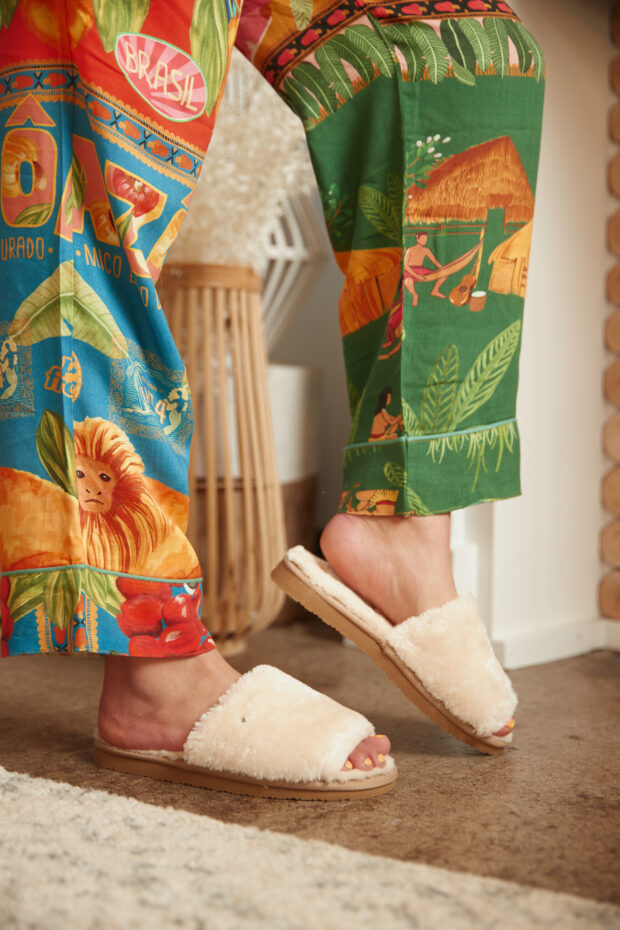When Minnetonka introduced its open-toe shearling collection of slippers last spring little did the brand know just how in step it would be with a work-from-home and frazzled world. The fuzzy, colorful, cozy collection of slippers—the “it” shoe style of 2020—provided much-needed comfort for consumers working (and eating, parenting, celebrating, nesting, binge-watching…) at home last year.
“When we first introduced our open-toe shearling slippers, we were selling them faster than we could make them,” says Minnetonka Director of Design Sandra Aris, adding there has been no let-up this year. “Fun, cozy and comfy is what we all need again this spring.”
Minnetonka has expanded the line with traditional styles, and also has a fun holiday pack in the works. The popular, limited-edition Lolo is offered in neutrals like cream (pictured) and blush as well as colorful leopard prints. It retails for $45.

To celebrate the expanded collection and embrace the slipper as serenity now style, Minnetonka enlisted Divine Meditation guru Devon Pipars to share her four essential tips for a good night’s sleep.
1: Have your last bite at least two hours before bed. Be aware that it’s difficult to sleep with a full stomach, and you may wake up in the middle of the night needing to use the bathroom.
2: Turn off all screens at least 30 minutes before bed. The specific wavelengths of light that screens emit—phones, TVs and tablets—block melatonin, one of the key hormones involved in sleep.
3: Keep the use of the bed traditional. Try not to work or watch TV in bed, and when it’s time for sleep have no screens visible—put smartphones face down.
4: Follow a wind-down routine. Try creating a bedtime ritual that helps you unwind and prepare for mental rest. Like shower, floss, brush, meditate, stretch, read a book and then sleep. When you repeat the same routine, you’re sending a cue to the mind and body that it’s time to transition from awake-time to sleep-time, making it much easier to fall asleep.
—Ann Loynd Burton




